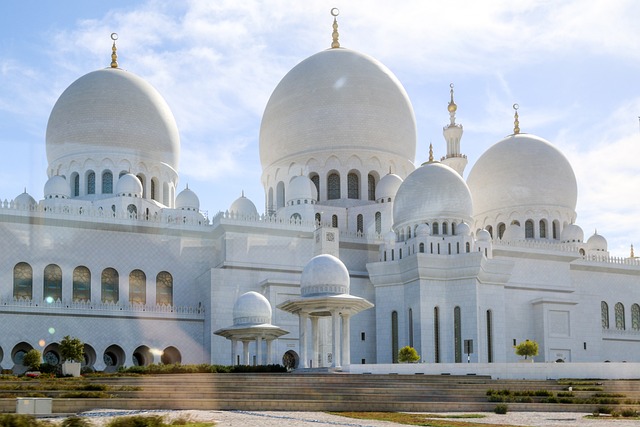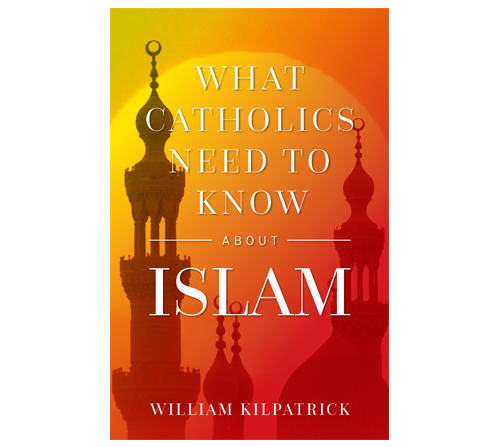A look at why no one tells the truth about Islamic beliefs — but particularly the pope.
I hope the title of this article doesn’t sound like a conspiracy theory — but if it does, keep in mind that not every conspiracy is a theory. Many of them have been thoroughly substantiated.
The cover-up I’m referring to is the highly successful effort by Church leadership (the Catholic Church in particular), the government, media, and academia to downplay the aggressive nature of Islam, and to present it instead as a model of moderation.
This cover-up does not necessarily reflect collusion between these four institutions — but whether working together or separately, they have helped to create a mindset that makes it nearly impossible to understand Islam.
Breaking It Down
In particular, the Western mindset has difficulty comprehending the Islamic doctrine of jihad — which holds that those who fight and kill unbelievers for the sake of Allah will be rewarded in paradise. In sharia law, jihad is defined as “war against non-Muslims” in order “to establish the religion” (Reliance of the Traveller o9.0).
There are other definitions as well. For example, jihad is often defined as “an interior struggle to better oneself.” However, the fact that those who are most highly honored in the Muslim world are “the martyrs” — those who have actually fought and killed (and been killed) for Allah’s sake — suggests that the jihad that counts the most involves violence.
By contrast, Western elites insist that “violence has nothing to do with Islam.” As Pope Francis stated in his 2013 Apostolic Exhortation, Evangelii Gaudium, “Authentic Islam and a proper reading of the Qur’an are opposed to every form of violence.”
Has Francis ever read the Qur’an, or was he just relying on the assurances of his good friend and dialogue partner, Ahmed Al-Tayeb, the Grand Imam of Al-Azhar? Whatever the case, most Catholics didn’t seem to mind. What Francis said seemed to fit in nicely with what Catholics had already been taught about Islam since the mid-1960s.
Catholic Teachings on Islam
For most of the last 1,400 years, Catholics had looked upon Islam as an enemy to be feared and fought. Then, in a relatively sudden turnabout, Church leaders began defending Islam. According to the new “enlightened” view, Islam is not so bad after all. In fact, according to many Catholic theologians, the two faiths have so much in common that they could be looked upon as brother faiths with shared values.
The first public manifestation of this changed attitude toward Islam occurred during the Second Vatican Council with the promulgation in 1965 of Nostra Aetate, a brief document which emphasized the commonalities between Islam and Christianity and ignored the deep differences between the two.
Despite its deficiencies, Nostra Aetate quickly set the tone in Catholic education for teaching about Islam. A similar change of heart was taking place in mainstream Protestant churches, but due in part to the media’s outsized interest in Catholic affairs, the idealized picture of Islam it presented gained more attention.
One Catholic institution in particular — Georgetown University’s School of Foreign Service — likely played a key role in polishing Islam’s image. Successive administrations in Washington had long relied on it for expert information and advice about international affairs. Unfortunately, Georgetown’s Center for Muslim-Christian Understanding, which was housed in the Foreign Service School, had become compromised by a massive donation from Saudi Prince Alwaleed Bin Talal. Eventually, as evidenced by its current focus on the threat of Islamophobia, the Center became little more than an apologist for Islam.
Excusing 9/11
The change of heart about Islam which began with the Second Vatican Council helps explain the nation’s mixed response to 9/11. Initially, there was a fear of all things Islamic, but within a relatively short time, American politicians, along with educators and TV anchormen, began a campaign to exonerate the religion from any blame for 9/11.
President George W. Bush inaccurately proclaimed that “Islam” means “peace” when, in fact, “Islam” means “submission.” Textbook publishers obligingly rewrote the history books in order to present Islamic history in glowing terms. Media personalities did likewise, and soon managed to convince the public that “Islamophobia” was a far greater threat than Islamic violence.
Meanwhile, thanks to the influence of Nostra Aetate, Catholics had already been indoctrinated along the same lines. They learned that “Islam means peace,” that Muslims revere Jesus and honor Mary, and practice the same moral code that Christians follow.
Thus, many if not most Catholics went along with the prevailing wisdom that 9/11 had “nothing to do with Islam.” Many came to believe that the true and peaceful Islam had been hijacked by a “handful” of radicals who had misunderstood their religion.
Lies Have Deadly Consequences
Unfortunately, the simplistic “hijacking” explanation used to explain 9/11 became the template for explaining just about every incidence of Islamic jihad afterward. Almost all violent jihad is now explained away as having nothing to do with Islamic beliefs: Either the jihadist misunderstood Islam, was mentally ill, or was a “lone wolf” with no real connection to the Islamic community.
In short, any explanation that takes the heat off the teachings of Islam will do. But if the real motive behind these terrorist attacks is ignored, they will continue, and probably escalate. No real remedy will be found until the real problem is addressed.
We’ll have more about that tomorrow in Part 2 of this article.
This article originally appeared in the January 14, 2025 edition of The Stream.
Pictured above: Grand Mosque in Abu Dhabi
Photo credit: Pixabay


